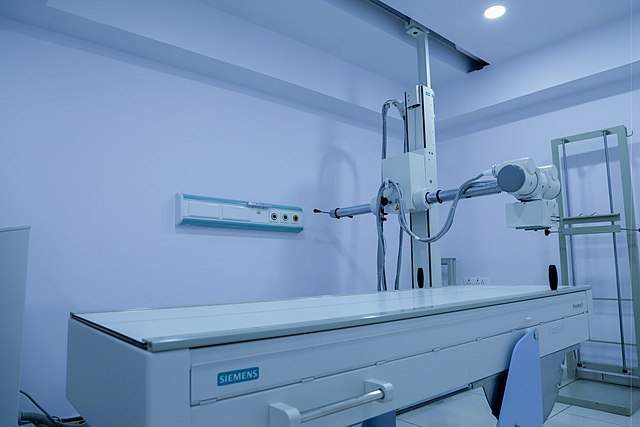In an office, a vulnerability hiding in old technology can quite easily cause a data breach.
In medicine, outdated X-rays, MRI machines, and patient monitors can even endanger lives.
So, why do many companies still rely on aged machines?
As every cybersecurity expert knows, securing legacy devices is difficult and expensive — especially if you integrate older and modern technologies.
But why is that so?
What are the top difficulties that come up when making legacy devices safe from hacking?
Is it time to leave that old router, scanner, or programmable logic controller behind?
Security Patches No Longer Available
To make systems and devices safe, they have to be continually updated. For many of these devices, manufacturers have stopped releasing the patches. The product either reached its End of Life (EOL) or End of Support (EOS) period.
The fact is manufacturers have limited resources. They might choose to cut off the support to shift their focus to more innovative and advanced developments.
The vendors no longer offer cybersecurity support. But that doesn’t mean people avoid using them past their end-of-support date. Many continue relying on outdated devices that accumulate both dust and security weaknesses hackers can exploit.
Legacy devices are difficult to secure against ever-evolving hacking exploits because the firmware or software on which they run might no longer receive updates.
Cybersecurity updates are essential because they:
- Offer patches for weaknesses
- Warn you of new hacking threats
- Protect the users from well-known vulnerabilities hackers might exploit
Without support from manufacturers, outdated devices can make your company vulnerable to data breaches and cyber-attacks. Hackers can use flawed old devices to get access to modern parts of your infrastructure.
Once that support stops, the products are frozen in their last supported states. Any vulnerabilities that are uncovered after the last update can make them potential cyber victims.
Securing Devices That No Longer Get Support
How do you make sure that legacy devices don’t make your systems vulnerable even after a manufacturer stops providing updates and patches?
To maintain security, businesses usually add a third-party maintenance provider to their infrastructure. Some are even designed to integrate easily with infrastructures that have both legacy and new systems.
They also have layers of cybersecurity tools that consist of firewalls, access controls, antivirus, endpoint protection, and others. The more layers a threat actor has to go through to get to sensitive data and other valuable assets, the better.
Limited Options For Securing Older Devices
Many people assume that manufacturers don’t want to secure older devices or invest in additional support. This is only partially true. Sometimes, vendors prioritize new technology they create and choose to invest more in their security and development.
Continuing support for older products can be costly for the company and no longer viable budget-wise.
Other times, the limitations of legacy devices are what makes them challenging to secure. You might not be able to secure an older device without a major redesign or an update.
Technology and malicious hacking evolve rapidly. Both legacy and modern technology have to keep up with the pace.
Older technology stays behind because it’s either not designed to integrate with new security tools or it can’t meet the new safety guidelines without compromising on functionality. That is, might lack the processing power to support new security solutions.
Decades ago, manufacturers prioritized different things. Many didn’t build technology with security in mind. Today, makers face more pressures and regulations that urge them to keep released technology safe.
Since they’re not designed with security in mind, they’re not compatible with new cyber tools. They might even have ingrained vulnerabilities that can’t be fixed with modern cybersecurity solutions.
This also makes it hard to meet compliance with new laws because outdated technology requires stronger security measures.
High Cost of Change
Both retaining the legacy technology and replacing it comes with a high cost for companies. That’s why 74% of manufacturers still rely on legacy technologies. They prioritize getting the job done.
Some reasons that the cost of securing legacy devices adds up are:
- You might need experts who specialize in security older technology
- Your infrastructure might need a major restructuring and investment
- Your older technology might need custom cybersecurity solutions
- You might need to train employees to use the new systems
Any change requires both time and money that businesses could have planned to invest and meet other business goals.
If you’re like most companies, you’ll integrate new technologies with legacy devices. This complicates security even further. There’s a major gap between protocols and security requirements for technology made decades apart.
As mentioned, it might not even be possible to completely secure the legacy device you have since the older technology has inherent limitations.
Leaving legacy technology “as is” can be costly in the long run as well. Since legacy technologies are more vulnerable to data breaches, it is a matter of time before they cause expensive cybersecurity incidents.
Three Options for Securing Legacy Devices
Legacy devices are not going anywhere anytime soon. Most companies aren’t ready to invest in major changes to their architecture or are resistant to change that might shake up the status quo.
Regardless of the reasons, legacy systems need to be secured against hacking exploits. What can you do to prevent older devices from becoming a liability?
Companies that rely on legacy devices and systems face three options:
- Replace outdated devices
- Attempt to fix the issue and keep updating the aged technology
- Invest in a specialized security solution that is designed for the protection of integrated and legacy devices







